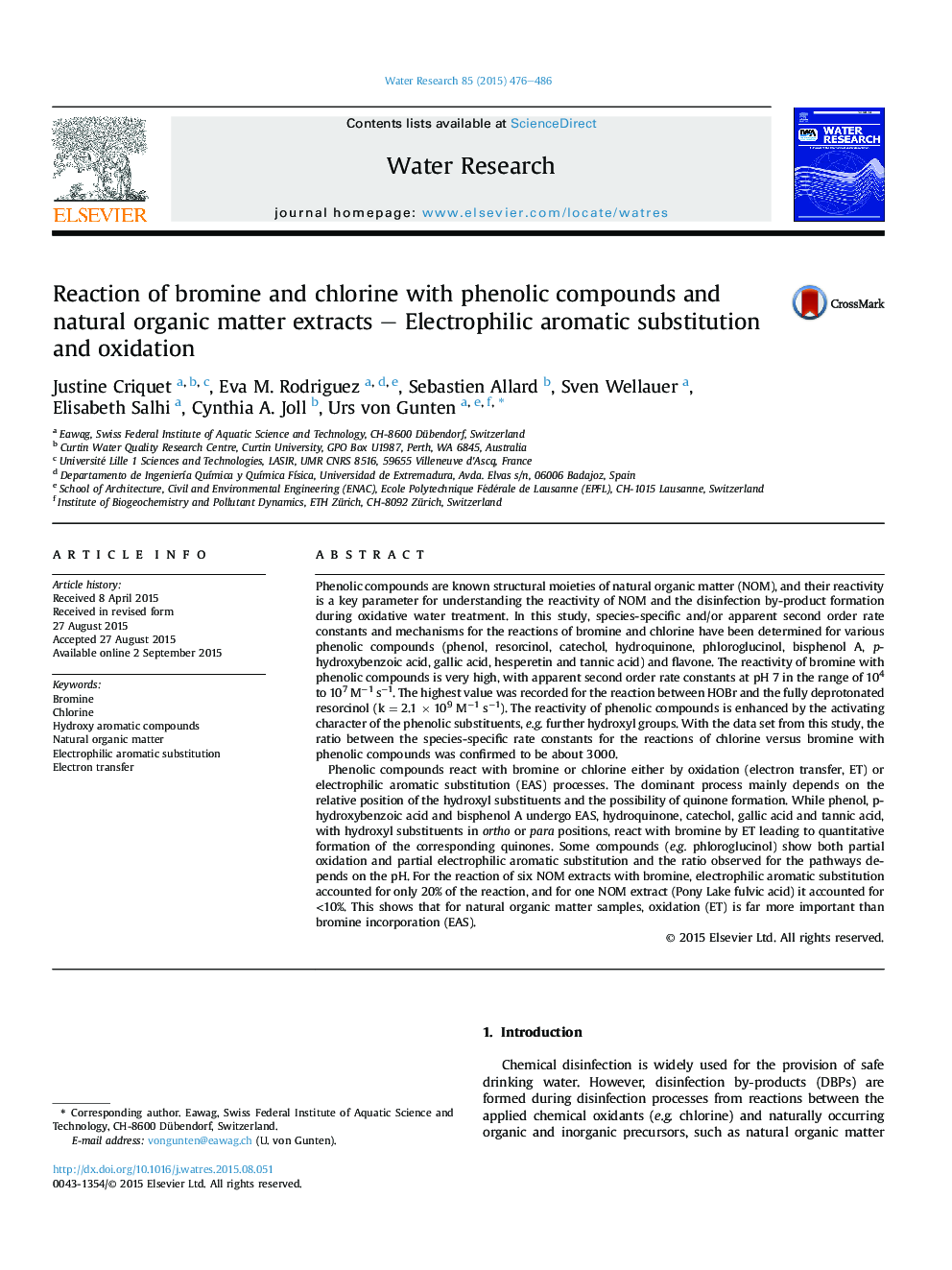| کد مقاله | کد نشریه | سال انتشار | مقاله انگلیسی | نسخه تمام متن |
|---|---|---|---|---|
| 6365924 | 1623083 | 2015 | 11 صفحه PDF | دانلود رایگان |
- Bromine reacts fast with hydroxy aromatic compounds (k â¥Â 104 Mâ1 sâ1, pH 7).
- Bromine/chlorine react by electrophilic aromatic substitution or electron transfer.
- Electron transfer (ET) reactions of bromine/chlorine may lead to quinones.
- The formation of quinones was experimentally demonstrated.
- The reaction of bromine with NOM isolates occurs mainly by electron transfer.
Phenolic compounds are known structural moieties of natural organic matter (NOM), and their reactivity is a key parameter for understanding the reactivity of NOM and the disinfection by-product formation during oxidative water treatment. In this study, species-specific and/or apparent second order rate constants and mechanisms for the reactions of bromine and chlorine have been determined for various phenolic compounds (phenol, resorcinol, catechol, hydroquinone, phloroglucinol, bisphenol A, p-hydroxybenzoic acid, gallic acid, hesperetin and tannic acid) and flavone. The reactivity of bromine with phenolic compounds is very high, with apparent second order rate constants at pH 7 in the range of 104 to 107 Mâ1 sâ1. The highest value was recorded for the reaction between HOBr and the fully deprotonated resorcinol (k = 2.1 Ã 109 Mâ1 sâ1). The reactivity of phenolic compounds is enhanced by the activating character of the phenolic substituents, e.g. further hydroxyl groups. With the data set from this study, the ratio between the species-specific rate constants for the reactions of chlorine versus bromine with phenolic compounds was confirmed to be about 3000.Phenolic compounds react with bromine or chlorine either by oxidation (electron transfer, ET) or electrophilic aromatic substitution (EAS) processes. The dominant process mainly depends on the relative position of the hydroxyl substituents and the possibility of quinone formation. While phenol, p-hydroxybenzoic acid and bisphenol A undergo EAS, hydroquinone, catechol, gallic acid and tannic acid, with hydroxyl substituents in ortho or para positions, react with bromine by ET leading to quantitative formation of the corresponding quinones. Some compounds (e.g. phloroglucinol) show both partial oxidation and partial electrophilic aromatic substitution and the ratio observed for the pathways depends on the pH. For the reaction of six NOM extracts with bromine, electrophilic aromatic substitution accounted for only 20% of the reaction, and for one NOM extract (Pony Lake fulvic acid) it accounted for <10%. This shows that for natural organic matter samples, oxidation (ET) is far more important than bromine incorporation (EAS).
145
Journal: Water Research - Volume 85, 15 November 2015, Pages 476-486
